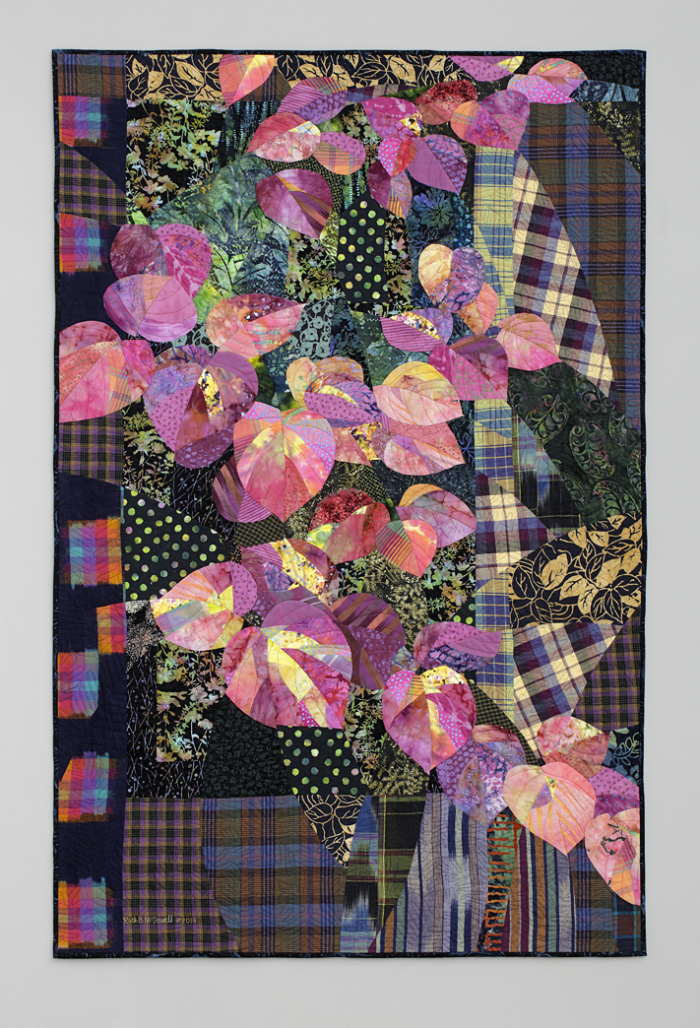
©2014 Ruth B. McDowell
Hobblebush, Viburnum alnifolium, in an understory shrub native to my area. Umbells of white flowers in spring and, usually, a clear yellow leaf in the fall. At the edge of a shady forest, I chanced upon one growing in a sunny spot with spectacular fall foliage of salmon, red violet, burgundy and lemon yellow. This is a color scheme I haven’t worked with often and presented some real fabric challenges, both for the colorful leaves and to keep my impression of the edge of the forest habitat. Working on a pieced quilt like this one is a creative challenge. It must work in composition, color, value and mix of patterns. It begins, because of the piecing format, with a detailed line drawing, in this case inspired by the pattern of growth of the hobblebush in an elegant composition of curves. Each line is a seam line between two pieces of fabric. Careful thought is incorporated to make the resulting pattern sewable in an orderly fashion! Because of the piecing format, there is an underlying unifying structure to the quilt, entirely distinct from a quilt made by applique. Then the process becomes choosing the collage of fabrics, working from a collection I have built up over decades. Each piece of fabric must work in the context of all the other pieces. In addition to considerations of hue, value, and intenisty, the mix of colors and patterns in the fabrics must fit in my overall scheme including exactly which part of a fabric design, and at what angle. This is a huge mix of cottons, printed, woven and hand-dyed commercial fabrics from a 40 year time frame. For me this is the most interesting and the most challenging part, and the most fun. I’m never sure when I begin exactly where the fabrics will take me. In this case, the large light and dark plaid on the right was a surprise. It could be that the straight geometry of this plaid complements the curves of the piecing, and that the light and dark squares are a reference to the light leaves and dark spaces of the rest of the quilt. Then, the sewing begins to assemble the quilt top, right sides together, following my pattern. With the top completed, I consider the quilting lines which will develop the low relief of the finished qult. You can look at this Hobblebush quilt for a long, long time.